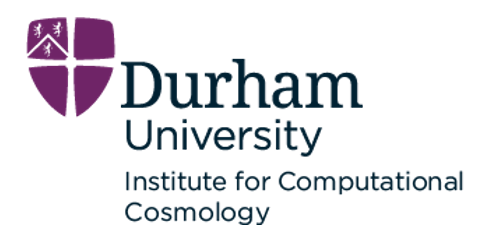 Over at Argonne, Nils Heinonen writes that four new projects for the ALCF Data Science Program (ADSP). These projects will utilize machine learning, deep learning, and other artificial intelligence methods to enable data-driven discoveries across scientific disciplines.
Over at Argonne, Nils Heinonen writes that four new projects for the ALCF Data Science Program (ADSP). These projects will utilize machine learning, deep learning, and other artificial intelligence methods to enable data-driven discoveries across scientific disciplines.
This year’s projects encompass a great diversity of scientific domains and address unique challenges from astrophysics, materials science, advanced imaging, and bioscience. Each project intends to implement novel machine learning techniques; some will integrate these methods with simulations and experiments, while others will pioneer uncertainty quantification and visualization to aid in the interpretation of deep neural networks,” said Elise Jennings, ALCF computer scientist. “Beyond the terrific science to be done, the new collaborations these projects will initiate between the ALCF and NCSA, as well as between the Advanced Photon Source and Harvard University, are themselves cause for excitement.”
The ADSP is a forward-looking allocation program to support efforts focused on the extraction of science from various data sources, as well as efforts focused on scaling the underlying data science technology to make use of leadership computing resources. The ADSP targets “big data” science problems that require the scale and performance of leadership computing resources. Four existing ADSP projects were also renewed, bringing the total number of ADSP projects for 2018-2019 to eight.
The new projects, originating in universities and national laboratories, focus on employing leadership-class systems and infrastructure to explore, develop, and advance a wide range of data science techniques. Targets range from the discovery of material properties to innovative developments in X-ray imaging techniques. ADSP awards last for two years and are renewed annually.
New ADSP Projects include:
- Deep Learning at Scale for Multimessenger Astrophysics through the NCSA-Argonne Collaboration, Eliu Huerta, University of Illinois at Urbana, Champaign. Multimessenger astrophysics refers to the contemporaneous observation of astrophysical phenomena using gravitational waves, electromagnetic radiation, neutrinos, and cosmic rays. Full realization of the goals of multimessenger astrophysics requires the resolution of outstanding computational challenges, which this project seeks to address through the development of algorithms that significantly increase the depth and speed of gravitational wave searches and that process terabyte-size datasets of telescope images in real-time. A crucial impact will be the real-time, at-scale discovery of multimessenger sources, providing a more complete picture of some of the universe’s most mysterious and powerful events.
Deep Learning for Real-time Gravitational Wave Detection and Parameter Estimation: Results with Advanced LIGO Data. Credits: Daniel George and E. A. Huerta (2017).
- X-ray Microscopy of Extended 3D Objects: Scaling Towards the Future, Chris Jacobsen, Argonne National Laboratory and Northwestern University. The 3D X-ray microscopy of frozen hydrated biological specimens is currently approaching a limit to specimen thickness, the surpassing of which violates the pure projection approximation (PPA) needed for standard tomographic imaging. Sufficient understanding of the underlying problem has enabled development of a novel approach to beyond-pure-projection X-ray image construction utilizing powerful—but computationally demanding—methods. This project aims to scale up these methods to meet the challenge of high-resolution X-ray imaging beyond the PPA, benefitting not just cell and brain imaging but the full range of future nanoscale imaging activities at DOE light sources.
- Machine Learning Magnetic Properties of van der Waals Heterostructures, Efthimios Kaxiras, Harvard University. The discovery of 2D ferromagnetic materials in 2017 ushered in a new era of studies on magnetic order. Using a data-driven approach, this project will combine machine learning and high-throughput density functional theory calculations to study van der Waals layered materials and predict their magnetic and thermodynamic properties. Facilitating the rapid identification of new functional materials will have broad impacts for science and industry.
- Developing High-Fidelity Dynamic and Ultrafast X-ray Imaging Tools for APS-Upgrade, Jin Wang, Argonne National Laboratory. This project will take advantage of the ALCF’s massively parallel computing power to develop a suite of algorithms and scalable code for processing the ultrafast high-throughput X-ray images at the Advanced Photon Source (APS), a DOE Office of Science User Facility. Utilizing real-time image pattern recognition and deep learning coupled with high-fidelity, high-throughput computational fluid dynamics and multiphysics simulations, this effort will complete the lifecycle of dynamic problems. This will benefit the imaging and scattering community while also laying the foundation for future high-resolution 4D imaging and coherent scattering. It will create new capabilities within APS user programs to address current high-impact scientific problems and problems to be confronted following the facility’s planned upgrade.
Renewed ADSP Projects
- Enabling Multiscale Physics for Industrial Design Using Deep Learning Networks, Rathakrishnan Bhaskaran, GE Global Research
- Data-Driven Molecular Engineering of Solar-Powered Windows, Jacqueline Cole, University of Cambridge
- Realistic Simulations of the LSST Survey at Scale, Katrin Heitmann, Argonne National Laboratory
- Constructing and Navigating Polymorphic Landscapes of Molecular Crystals, Alexandre Tkatchenko, University of Luxembourg




